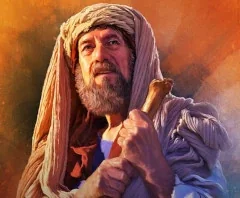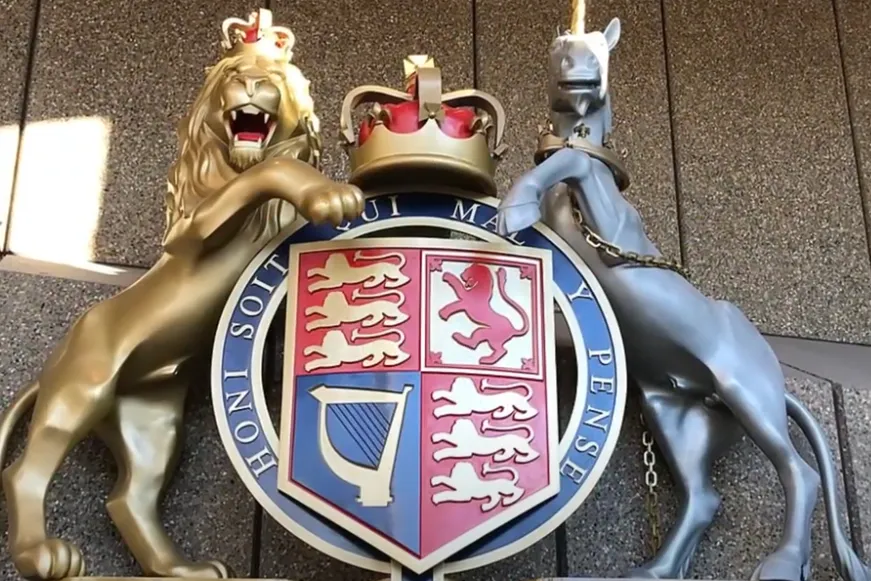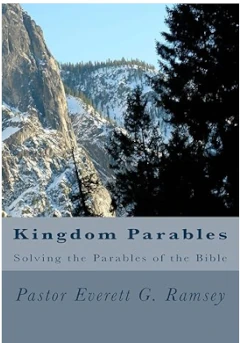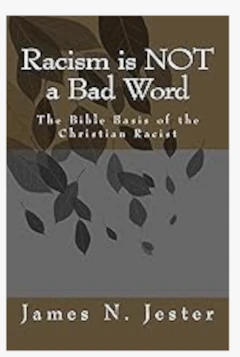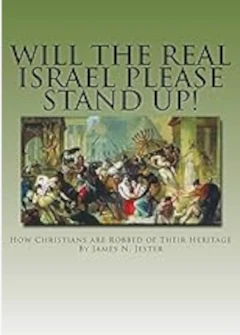Paul's Missionary Journeys - Part 4
SECOND MISSIONARY JOURNEY (Part one)
Copied from the sermon notes of Pastor Don Elmore
April 13, 2025
Scripture Reading: 2 Timothy 3:15-16:
15) “And that from a child thou [Timothy] hast known the holy scriptures, which are able to make thee [Timothy]wise unto salvation through faith which is in Christ Jesus.
16) All scripture is given by inspiration of God, and is profitable for doctrine, for reproof, for correction, for instruction in righteousness:”
What were the “holy scriptures” that Timothy learned from his mother, Eunice, along with his grandmother, Lois, that made him wise unto salvation (2 Timothy 1:5)? It was probably the Septuagint, the Greek translation of the Hebrew Old Testament. It was written by seventy-two Judeans who translated it at the request of the Egyptian Pharaoh for the library at Alexander in Egypt, several centuries BC.
Timothy grew up in Asia Minor at a time when the New Testament era was in its infancy – there was no such thing as New Testament books yet. It wasn’t compiled until 367 A.D., when Athanasius, Bishop of Alexandria, Egypt gave a list of books that form the modern twenty-seven books of the New Testament.
Asia Minor was the hotbed of missionary activities in the New Testament. The apostles --Paul, Phillip, Peter, John, Andrew, Thaddaeus, Matthias, Thomas, and James each went to and/or wrote about the people and churches of Asia Minor, Macedonia, Achaia, Syria, Cyprus, Crete, Malta, and Italy.
Paul
The book of Acts tells of Paul’s missionary journeys, but other disciples went into the same regions, and others went into all the other parts of the Roman Empire world. These other expeditions are very seldom or not mentioned in the New Testament, but they still occurred.
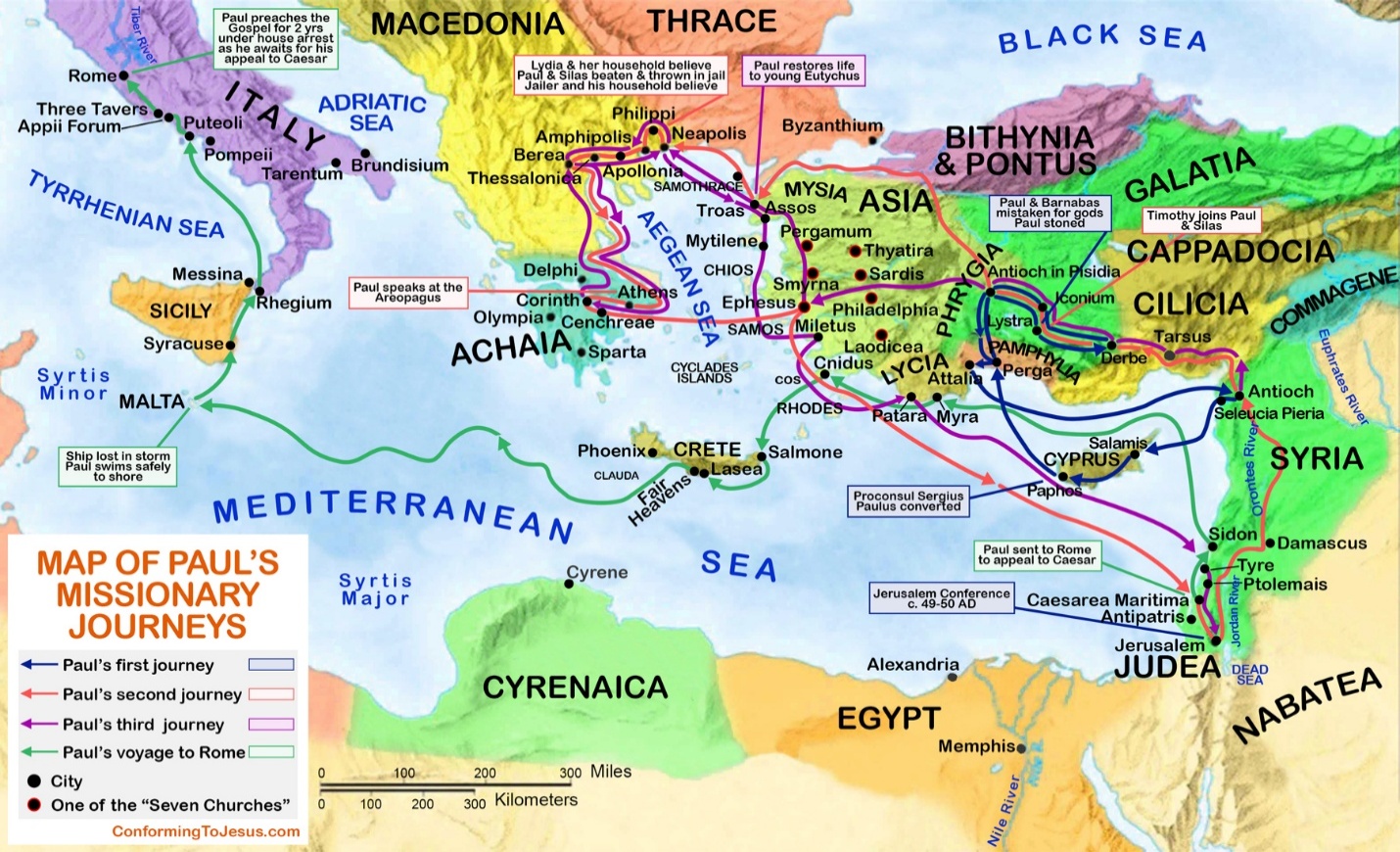
Peter
1 Peter 1:1:
1) “Peter, an apostle of Jesus Christ, to the strangers[elect sojourners]scattered [of the dispersed] throughout, Pontus, Galatia, Cappadocia, Asia, and Bithynia[all five of these areas are provinces in upper Asia Minor].”
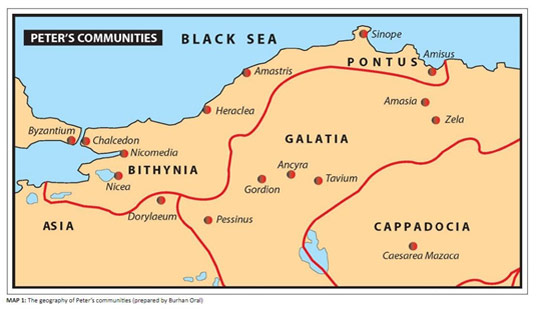
John
John wrote about seven churches in Revelation, chapters two and three, which were in western Asia Minor. He was on the isle of Patmos, in the Aegean Sea, when he composed this book.
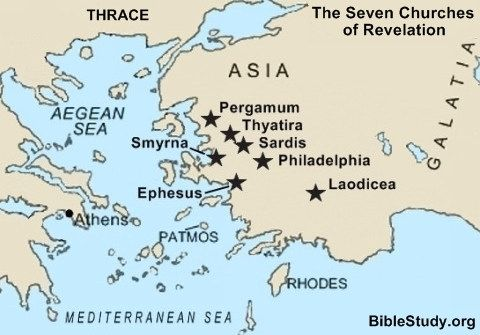
James
James 1:1:
1) “James, a servant of God and of the Lord Jesus Christ, to the twelve tribes[of Israel] which are scattered [in the dispersion] abroad, greeting.”
Question for Judeo-Christians and Jews: How could James write to the 12 tribes of Israel if ten tribes were no longer in existence?
Here is a list of 26 people that are in the New Testament and where they were born:
- Saul,(his Hebrew name) who later was called Paul (his Greek name), was a Benjaminite who was born in Tarsus, Asia Minor.
- Barnabas, who was a Levite, was born on the island of Cyprus.

- Apollos was born in Alexander, Egypt.
- Aquila was born in Pontus, in Asia Minor,
- Priscilla was born in Italy.
- Phoebe was born in Cenchreae, a coastal town about five miles southeast of the city of Corinth in Achaia.
- Titus was born on the island of Crete or in Antioch, Syria.
- Luke was born in Antioch, Syria.
- Silas was born in Lystra, Asia Minor.
- Timothy was born in either Lystra or Derbe, in Galatia, in Asia Minor.
- Tertius was born in Corinth, Achaia.
- Apphia was born in Colossae,in Asia Minor.
- Persis was likely born in modern-day Iran.
- Philip was born in Bethsaida, Galilee.
- Rufus, son of Simon of Cyrene (the person who carried Jesus’ cross) was born in possibly Cyrene, a city in modern-day Libya, Africa.
- Archippus was born in either Colossae or Laodicea (one of the seven churches in the book of Revelation) in Asia Minor.
- Peter was born in Bethsaida, in Galilee.
- Epaphras was probably born in Colossae in Asia Minor.
- Jason was born in Thessalonica, in Macedonia.
- Sopater or Sosipater was born in Iconium in Galatia in Asia Minor.
- Sosthenes was probably born in Corinth in Achaia.
- Trophimus was probably born in Ephesus, (one of the seven churches in the book of Revelation) in Asia in Asia Minor, was the man the Jews supposed Paul had brought into the temple and defiled it.
- Tychicus was probably born in Ephesus(one of the seven churches in Revelation) in Asia in Asia Minor.
- John Mark, who was born in Cyrene, in modern-day Libya, moved to Jerusalem with his wealthy parents when they had their property stolen by an invasion of Ethiopian tribes.
- Lydia was born in Thyatira (one of the seven churches in the book of Revelation) in Asia Minor.
- Aristarchus was born in Thessalonica, in Macedonia.
All the above workers, some who were "fellow laborers” with the Apostle Paul, some who he met on his missionary journeys, some who were a “helper” to him; they were all Israelites. But none were born in Judaea. There were 3,000 Israelite Judean converts in Acts 2:41(on Pentecost) and 5,000 more Israelite Judean converts (men)in Acts 4:4 (shortly thereafter).
The Christian movement represented a tiny fraction of the ancient world. It was very small, like a “mustard seed,” when it began. After 40 years from the resurrection of Jesus, it had grown to about 34 churches (in the Bible) throughout the world in six main regions:
A) Phoenicia,
- Samaria,
- Judaea,
- Galatia,
- Asia, in Asia Minor, and
- Macedonia.
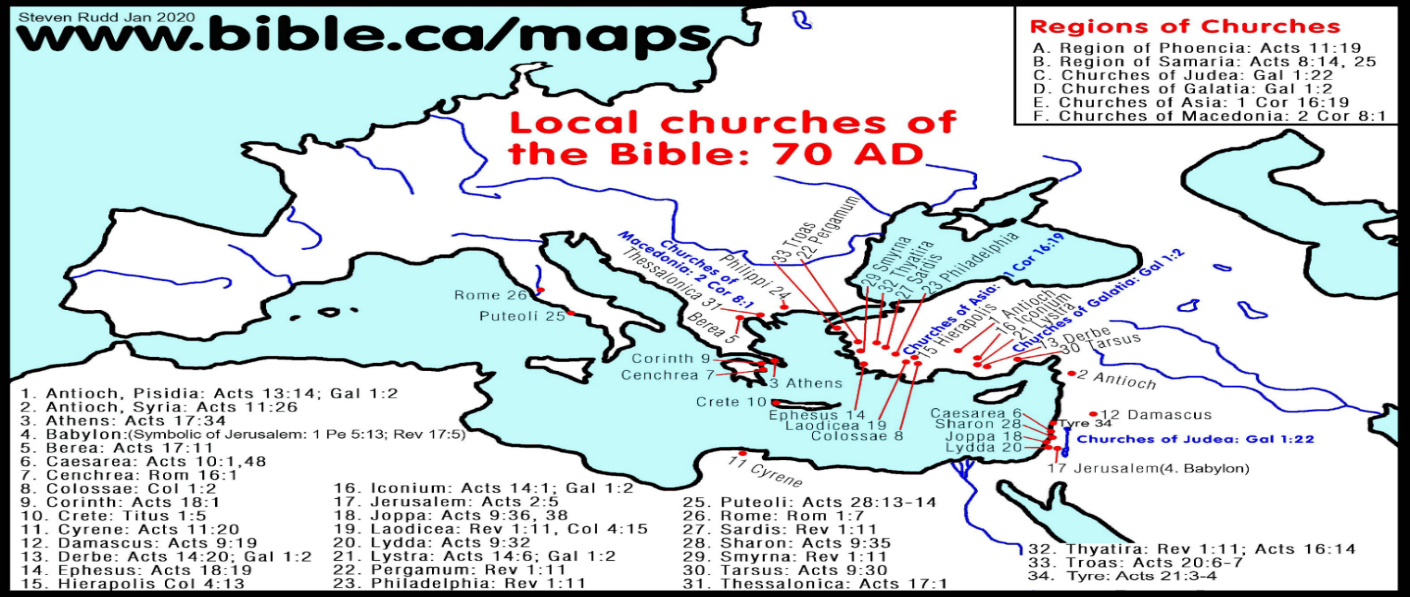
It is important to understand what Judeo-Christianity states about the early church is not backed up in the Scriptures. This Judeo-Christian organization (Antichristian-Christian) states that:
- Jesus Christ was a Jew,
- The apostles were all Jews,
- All Israelites were Jews,
- The early church was all Jews,
so, they conclude that Christianity grew out of Judaism. They teach that Christianity was a sect of Judaism, but the truth is that Judaism is a perversion of Christianity. For Judaism says that Jesus Christ was not God, was a bastard born to a prostitute woman, was a blasphemer, and is now in hell, while Christianity says the opposite. In fact, even Islam, in their holy book, the Quran, says the Jesus Christ was not divine but was a prophet of God and is now in heaven.
The Bible is silent on the churches of western Europe and northern Africa. There were churches that were flourishing there too that are not mentioned in the Bible. But the Bible does tell us why the Edomite Judean (Jew)can never be a believer and thus, disprove the Judeo/Christian statements that Jesus, the apostles, all Israelites, and all the members of the early church were Jews.
John 10:26:
26) “But ye [Jews, verse 24] believe not, because ye [Jews]are not of My sheep, as I said unto you [Jews].”
Jesus was answering the Edomite Judeans (Jews) because they are the ones who asked the question.
John 10:24, 25a:
24) “Then came the Jews [Edomite Judeans/Jews] round about Him [Jesus the Christ] and said unto Him[Jesus the Christ]. How long dost thou [Jesus the Christ] make us [Edomite Judeans/Jews] to doubt? If Thou [Jesus the Christ] be the Christ, tell us [Edomite Judeans/Jews] plainly.
25a) Jesus answered THEM [Edomite Jews]”.
Jesus told the Jews that they believed not because they were not of His sheep. That is the reason that the Jews will never be believers. They are not His sheep, but they are tares, wolves, and are of the wicked racial seed line.
The Bible doesn’t tell us everything that happened for it would be a very large book with many, many volumes. Paul spent almost four years in Ephesus (Asia Minor), and a year and a half in Corinth (Achaia),and there are just a few verses that tell us what happened during this time. The same is true with all the other apostles.
Half of the New Testament is basically the story of the missionary journeys of Paul and his nine letters to the churches in Asia Minor, Greece, and Rome that he had either started or confirmed and his four letters to his helpers/associates/fellow laborers:
- Galatians; 48-49 AD
- 1 & 2 Thessalonians; 50-51 AD
- 1 & 2 Corinthians; 54-55 AD
- Romans; 55-56 AD
- Philippians; 60-62 AD
- Philemon; 60-62 AD
- Colossians; 60-62 AD
- Ephesians; 60-62 AD
- 1 Timothy; 62-65 AD
- Titus; 62-65 AD
- 2 Timothy; 65-67 AD
Saul/Paul was a member of the Jewish Pharisees before he became the great missionary to the formerly divorced Israelites who had been “unclean” for over seven hundred years (see part two of this series). But he was born an Israelite from the tribe of Benjamin, and he was chosen by God to be a vessel to teach the former divorced house of Israel. Paul was a unique character, who went from a Jewish fanatic to a person he would have arrested and put in jail before his conversion.
There were no Christians in Jerusalem after its destruction in 70 A.D. by the Roman army. The members of that church were able to escape shortly before the city was destroyed, which was two years after Paul was crucified. About 40 years previously, at the first Pentecost in Jerusalem after Jesus’ resurrection, there were Israelite Judeans from:
- Elam (modern-day Khuzestan and Illam provinces in southwestern Iran, and parts of southern Iraq,
- Parthia(modern-day Iran, and included parts of modern-day Iraq, Turkey, Armenia, and Afghanistan),
- Mesopotamia (modern-day Iraq with parts also extending into Syria, Turkey, and Iran),
- Media (modern-day Azerbaijan, Kurdistan, and parts of Kermanshah),


- Judaea,
- Cappadocia, Asia Minor
- Pontus, Asia Minor
- Asia, in Asia Minor,
- Phrygia, Asia Minor,
- Pamphylia, Asia Minor,
- Parts of Libya about Cyrene,
- Egypt,
- Rome, Italy, sojourners, Judeans and proselytes,
- Crete, and
- Arabia (Acts 2:9-12).
And they all understood what the other Judeans from different areas of the world (15 different areas) were saying in their different languages. It was a miracle; “the speaking of tongues,” that occurred on this first Pentecost after Jesus’ resurrection.
How did all these Israelite Judeans get to these different locations in the world? They went there by eventually escaping from their captive country or by deserting their nation before the enemy arrived or by leaving their homeland because of a severe drought and/or famine. And many also departed from their homeland by regular migration. For example, some Israelites left, while the Hebrews were in Egypt, some many years before their enslavement and Exodus (they were there for 215 years). These exiles went to mostly to Greece, Asia Minor and a few went to Italy.
Many Israelites constantly migrated over the centuries. They migrated before they were a kingdom, when they were a kingdom and when they were two separate kingdoms. Many times, they were captured by different nations (Mesopotamia, Moab, Canaan, Midian, Philistine, Edom, Ammon, Syria, etc.)as God’s judgment for their disobeying His commandments.
Eventually, the Assyrians came and took both the house of Israel and most of the house of Judah captive. Over a hundred years later, the nation of Babylon took the remainder of Judah (Jerusalem) captive for 70 years. The house of Israel never returned to the “promised land” as they were divorced by Almighty God and continued in their practices of following other gods. They eventually left Assyria (Scythians and Cimmerians) and traveled mainly westward to Syria, Cyprus, Crete, Macedonia, Achaia, Italy and other parts of the Roman world, etc. Only 40,000 or so Israelite Judeans returned to Jerusalem after their time of captivity was over.
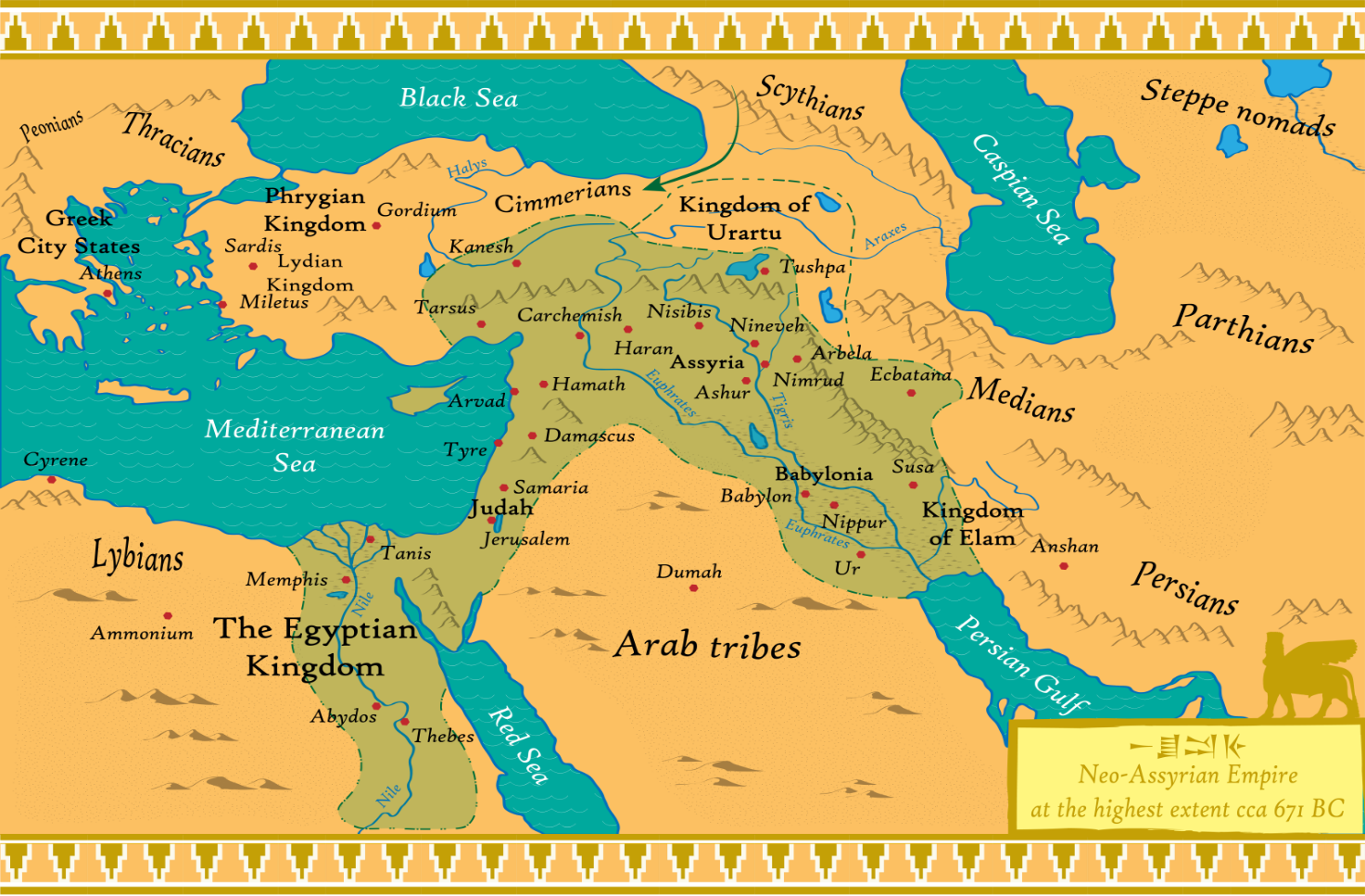
After the stoning death of Stephen, many Christian Judeans fled from Jerusalem and went in large numbers to Antioch, Syria and other locations throughout the area. Paul and Barnabas stayed in Antioch (Syria) for a year and assembled with the church and taught many Israelites (Acts 11:22-26). Later, the city became the center from which Paul performed his missionary labors (Acts 13: 1-5, 14-44; 14: 26-28; 15: 22-41; 18: 22-23). It was in Antioch (Syria)that the disciples (including the apostle Paul) were first called “Christians (Acts 11:26).”
Remember, there was a Hittite (Canaanite Jewish) Empire in modern-day Turkey from 1600 to 1200 B.C. When their empire died, there were many Jews who remained there as well as in other places that were close to and around Palestine. Jews were in Asia Minor, Syria, Lebanon, Mesopotamia, Achaia, Egypt, Arabia, Northern Africa, and Italy, etc.
So, there were Edomite Judeans (Jews), Israelite Judeans (House of Judah) and Israelites from the ten tribes(House of Israel) who were in dispersion integrated in many areas from the promised land. There were also people who were descended from Japheth (one of the three sons of Noah) who were living in these same lands. And there was a significant number of people who were products of mixed marriages between Israelites and individuals from the Kenites/Canaanites/Edomites and Japheth.
Luke’s account of Paul’s conversion marks a decisive turning point in the history of the early church. Before Saul’s conversion, he was at Stephen’s stoning, when the witnesses laid down their clothes at his feet (Acts 7:58).Once Christianity started, he went and arrested as many Christians as he could. Paul was later stoned as Stephen was, as he was in favor of the stoning of Stephen. (I think that Saul remembered this occasion, the stoning of Stephen, as the Jews were stoning him).
Paul was born in Tarsus, a city in southern Asia Minor, somewhere around five A.D. and he held Roman citizenship. He was from a wealthy family who gave him an outstanding education, and by his 21st birthday he had earned the equivalent of two advanced academic degrees. He was an Israelite of the tribe of Benjamin who was raised as a Jewish Pharisee. Paul studied in the Jerusalem school of Rabbi Gamaliel, who was one of the leading Jewish Pharisaic thinkers of his time. When Saul (Hebrew) or Paul (Greek) was young he was very dedicated to the goals of the Pharisees. He hated any departure from the Pharisaical code.
When he became aware of the group called “The Way”, the followers of Jesus of Nazareth, he unleashed his fury against them. He went after the Christians with a passion, going from house to house to find them and jailing many men and women. He was in favor of their executions and even compelling them to blaspheme. While Saul took to the road to Damascus, Syria to round-up some more Christians, he came face to face with the Person who was the contrasting figure of Pharisaism.
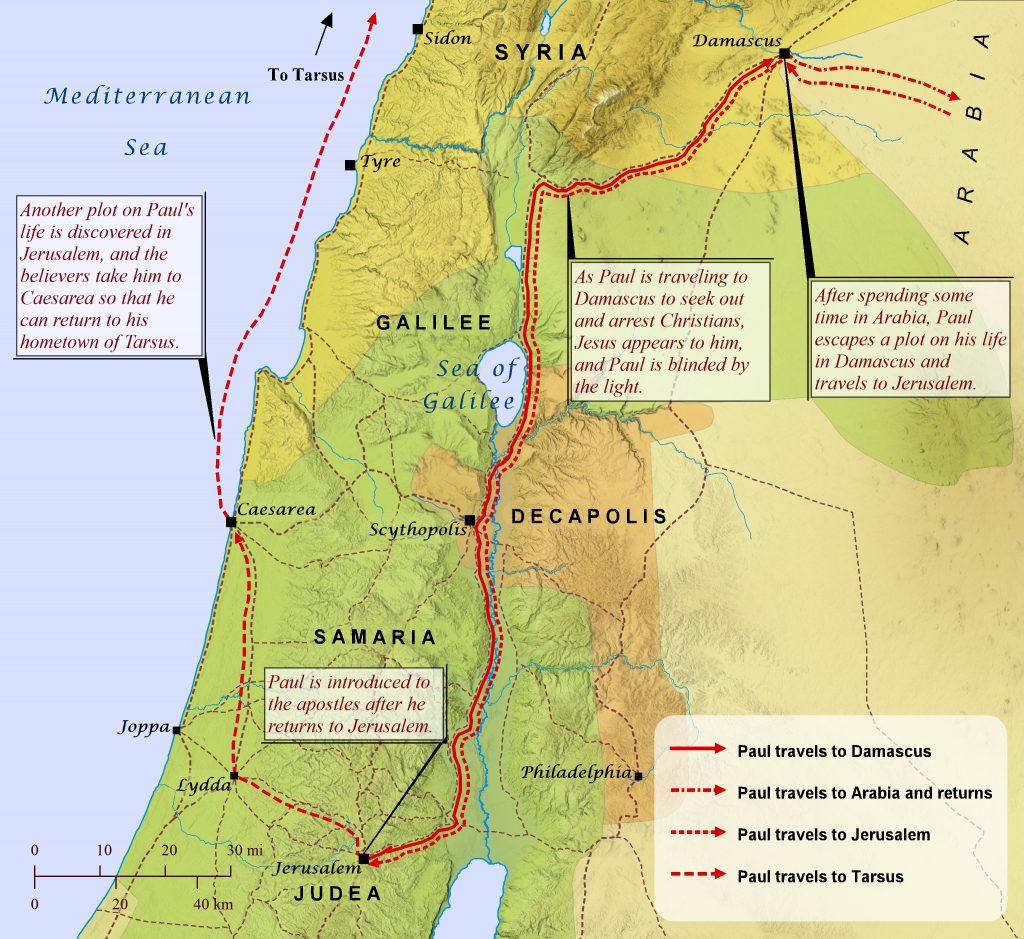
After his conversion, he learned the gospel from Almighty God by studying in Damascus and Arabia. He then traveled back to Damascus, where he escaped a Jewish plot on his life, and then traveled to Jerusalem where he had been led to safety from Jews plotting to kill him. He then traveled to Caesarea and then to Tarsus in Asia Minor.
Paul stayed in the area of his birth, preaching for about five years, before he was found by Barnabas and brought to the church at Antioch, Syria. It was from this church that Paul was sent on his first missionary journey along with Barnabas and Mark:
- From the church of Antioch in Syria,
- Then they went to Selecia, Syria,
- Then they sailed to Salamis and traveled over land to Paphos, Cyprus,
- Then they sailed to Perga, (Mark returns to Jerusalem),
- Then to Antioch, Iconium, Lystra, Derbe,
- Then back to Lystra, Iconium, Antioch, Perga, to Attalia, Asia Minor,
- Then they sailed to Selecia, Syriaand
- Then back to their starting point to the church in Antioch, Syria.
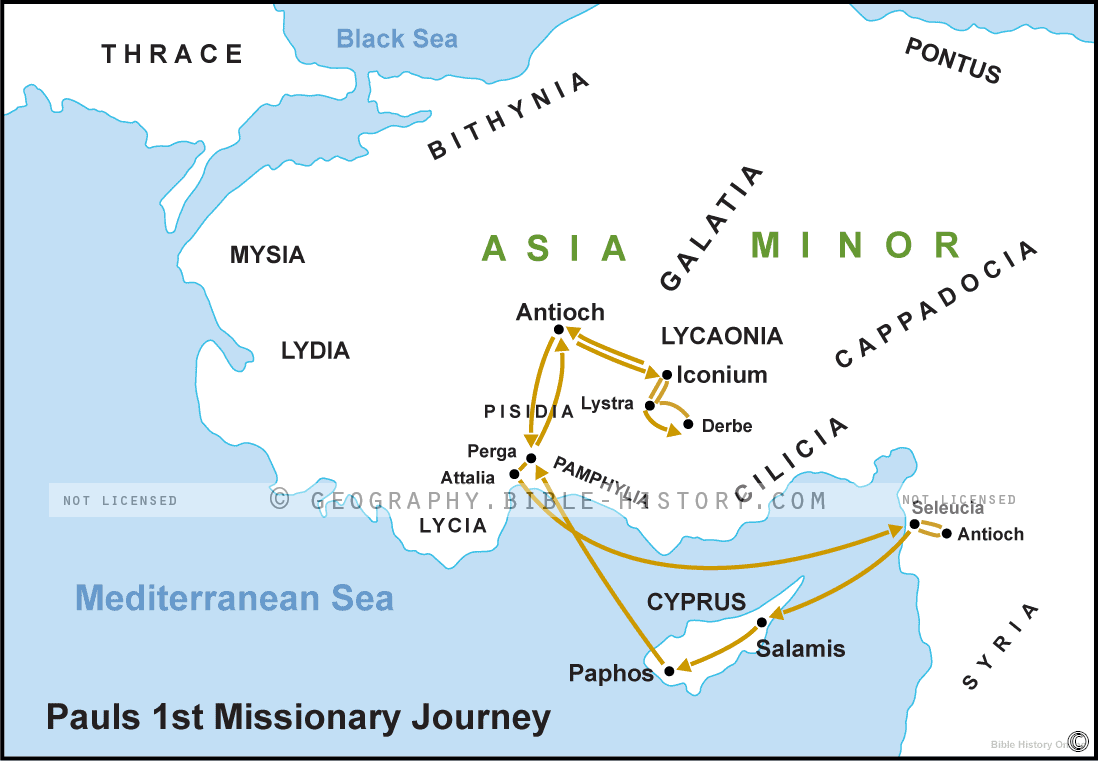
There were many constant conflicts that the Jews cast upon Paul, such as blaspheming and contradicting him, expelling him from the city of Antioch and Iconium, protesting his meetings, plotting and having him stoned to death, and doing all sorts of things to stop him from preaching the gospel of the kingdom!
PAUL’S SECOND MISSIONARY JOURNEY
Did the same people who went with Paul on his first missionary journey go with him on his second? It started out that way, but there was suddenly a big problem. Barnabas and his cousin or nephew, John Mark, went with Paul on their first missionary journey, but John Mark left them when they arrived at Asia Minor. As a result of Mark’s early departure on the journey, Paul and Barnabas had a big fight over who was going to go with them on their second missionary journey – was it John Mark or someone else?
Barnabas wanted to take his relative, John Mark, with them. Paul was against this because he had suddenly previously left them.
Acts 15:36:
36) “And some days after Paul said unto Barnabas, Let us go again and visit our brethren in every city where we have preached the word of the Lord, and see how they do.
Acts 15:36 states that Paul said to Barnabas that they should “go again and visit our brethren [or racial kindred] in every city where we have preached the word of the Lord, and see how they do.” Notice that Paul did not say that they should “go again and visit” Gentiles or non-Israelites, like most of Christendom says today.
Acts 15:37, 38:
37) And Barnabas determined to take with them John, whose surname was Mark.
38) But Paul thought not good to take him with them, who departed from them from Pamphylia, and wentnot with them to the work.”
Paul and Barnabas were in a dispute about whether to take Mark again with them on their missionary journey.
Acts 15:39-40:
39) “And the contention was so sharp between them [Barnabas and Paul], that they departed asunder one from the other: and so Barnabas took Mark, and sailed unto Cyprus:
40) And Paul chose Silas, and departed, being recommended by the brethren unto the grace of God.
This segment of scriptures shows that even the leaders of Christianity can have major disagreements over issues like personnel. For whatever reason, they couldn’t make a decision that agreed with them both. So, they took different disciples and went on their own separate journeys.
- Barnabas took his relative, John Mark, and they went to where Barnabas was born -- Cyprus.
- Paul took Silas, and started his journey to his birthplace, which was at Tarsus in the providence of Cilicia.
Before we go farther, let’s look at who John Mark was and see if the apostle Paul and Mark ever made up?
JOHN MARK
Who was John Mark? Mark was the author of the second book in the New Testament. Mark was related to Barnabas (either as a cousin or nephew). There is controversy as to how he was related according to biblical references. He was either the brother of Aristopulos or of Mary; therefore, he could be either the cousin or nephew of Barnabas.
But Paul deeply resented Mark’s conduct at the beginning of his first missionary journey, which is shown by his refusal to employ his services on his second journey. It has been assumed that Mark shirked the dangers of the enterprise, or that he tired of the work. Barnabas, at any rate, judged Mark’s conduct more leniently than Paul, and later Paul himself modified his attitude.
Barnabas took Mark with him on a mission to Cyprus, and we hear no more of him in the Book of Acts. When Mark next appears, he is the “fellow laborer” of Paul (Philemon24), who had by this time become completely reconciled to Paul and had found Mark a comfort in Paul’s imprisonment.
We don’t know what happened in between, but clearly Barnabas taking John Mark in Acts 15 to Cyprus brought about a process whereby John Mark was restored and returned to useful missionary service, even in the eyes of Paul, who previously had been so hostile to him.
During the time of the Maccabees (200 BC – 120 BC), the Judeans in Jerusalem and other areas close by, endured harsh wars, population displacement and foreign occupation. The two cities of refuge where the Judeans mainly fled were to Cyrene (Libya) and Alexander (Egypt). The Judeans remained religiously observant, faithful to the Mosaic Covenant and visited Jerusalem annually for the feast days. Their religious leaders were Levites, who were well learned in the Hebrew Scriptures.
One such family was a family of Levites who lived together in Cyrene which included Barnabas, his brother Aristopulos, and their cousin, Strapola, who became the wife of Peter, one of the chief apostles. They were rich farmers who produced agricultural products which they marketed internationally. They were well travelled and proficient in international languages. Just before New Testament times (5-20 BC), there were tribal conflicts and civil disturbances in which Ethiopian tribes robbed the family of much of their wealth. After this, the family fled back to Jerusalem.
Mark was related to one of Barnabas’ female relatives (Mary) who ministered to Christ, and in whose house in Jerusalem was a place which was used for regular meetings of His disciples. Peter went to her house (Mary’s) after he was miraculously rescued from prison by an angel (Acts 12). Peter called John Mark, “my son,” and it is to Peter that Mark is indebted for his Gospel narrative. For this reason, some call his book, Peter’s message about the gospel of Christ.
Mark’s missionary journeys took him to various regions, including Egypt. He is credited with founding the Church of Alexandria, Egypt which became a crucial center for Christian thought and theology. Mark, Barnabas, Paul, and Peter all had an amazing relationship with each other and their kinsman Redeemer.
WHERE DID PAUL GO ON HIS SECOND MISSIONARY JOURNEY?
Next on Paul’s campaign, after he left Tarsus, was that he returned to Derbe and Lystra in Galatia. He had great success at these two cities about five years previous on his first journey. But there were also some problems.
First, after he healed a man who was crippled all his life, the local people thought that they (Paul and Barnabas) were two of their pagan gods: Jupiter and Mercury.
Second, after they convinced the people that they were men like they were, the Jews came from Antioch and Iconium and persuaded the people to stone Paul to death. Then they dragged his supposedly dead body outside of Lystra.
Third, after the Jews left, the disciples came and stood around his body – he immediately got up and started preaching in the same cities that the Jews were living in.
Paul returned to these two Asia Minor cities once again. What would happen this time? Paul would meet a disciple who would be one of his most faithful associates. The person, who would come into his life, was the son of a faithful Judean mother (House of Judah) and a faithful Greek (House of Israel) father(Acts16:1).
Paul quickly recognized his potential and decided that he wanted to take their son on the rest of his journeys. This son became Paul’s companion from here on. He was faithful to Paul in his ministry. Who was he?
His name was Timothy. We have two letters written by Paul to him -- 1st and 2ndTimothy.Paul and Timothy became very close friends. They became like father and son. Let’s look at one of the things that Paul wrote to his loyal companion.
1 Timothy 4:1-3a:
1) “Now the Spirit speaketh expressly, that in the latter times some shall depart from the faith, giving heed to seducing spirits, and doctrines of devils[demons];
2) Speaking lies in hypocrisy; having their conscience seared with a hot iron;
3a) Forbidding to marry…”
Forbidding marriage is one of the doctrines of the demons. This also applies to religions that discourage or forbid marriage to anyone among laymen, clergy or nuns, like the Roman Catholic Church. Marriage is honorable to all and is a covenant.
There are some churches that teach that married men may become priests, but unmarried priests may not marry. And married priests, if widowed, may not remarry.
There are at least four main problems with this teaching of no marriage for ministers, priests, bishops, cardinals, popes, or nuns:
1) Many of the apostles, including Peter, were married.
1 Corinthians 9:5:
5) “Have we not power to lead about a sister, a wife, as well as other apostles, and as the brethren of the Lord, and Cephas [Peter]?”
Thus, the supposed first pope of Roman Catholicism, (he really wasn’t the first pope, but the Catholics believe he was), but they don’t acknowledge that he was married or if they do, they don’t realize that Peter should set an example of marriage for later clergy? Remember, Peter was married to Barnabas’ cousin, Strapola and Peter had a mother-in-law (Luke 4:38).
2. The Old Testament priests married. The first high priest, Aaron, clearly had sons, and it was from his biological line that the priests came.
Exodus 28:1:
1) “And take thou unto thee Aaron thy brother, and his sons with him, from among the children of Israel, that he may minister unto me in the priest’s office, even Aaron, Nadab, and Abihu, Eleasar and Thamar, Aaron’s sons.”
The priests were prohibited from marrying a defiled or divorced woman (Leviticus 21:7), and the high priest was required to marry a virgin (Leviticus 21:10, 13-14). But it is quite clear the priests were permitted to marry and produce children (Leviticus 21:15).
3) Today, vasectomies, abortions, transgendered individuals, homosexuals, abortion pills, sodomites, tying of the female tubes, same-sex marriages, etc., all represent the notion of having no children. Abortion is the biggest sin in preventing the birth of millions of babies, instead they are slaughtered in the womb. The young babies are pulled apart, poisoned, stuck with instruments, etc. in the womb until they are dead. Live begins at conception.
4) Pastors do represent Christ in a sense, in that they proclaim His Word and should model the keeping of His commands. Thus, the pastor is not to be exactly like Jesus was in every way, but the pastor is to follow Jesus and His teaching. And Jesus nowhere commands His pastors to be celibate. In fact, many of His apostles modeled married life, and their requirements for pastors expect marriage as the norm. They all had the right to marry (1 Corinthians 9:5). The typical pastor should be a husband and father.
THE JOURNEY CONTINUES
So, the journey started out with Paul and Silas being the main missionaries, but Timothy joins them somewhere when they were at Lystra. Where do the three of them go next?
Acts 16:6-8:
6) “Now when they had gone throughout Phrygia and the region of Galatia, and were forbidden of the Holy Ghost to preach the word in Asia,
7) After they were come to Mysia, they assayed to go into Bithynia: but the Spirit suffered them not.
8) And they passing by Mysia came down to Troas.”
If a person doesn’t look at a map, or know the map by heart, he will probably not get what these verses meant. Churches had been already established in most of Asia Minor.
But where were Bithynia, Asia and Mysia? Are they also in Asia Minor? Is Asia a province in Asia Minor as well as a separate continent?
When the Holy Spirit forbade Paul to preach the word in Asia, the Holy Spirit meant the province of Asia (in Asia Minor) not the continent of Asia. This is where the majority of the seven churches of Revelation are located…in Asia of Asia Minor! Why does most of Christendom believe that Rome was the original “mother” church?
(1) Ephesus,
(2) Smyrna,
(3) Pergamum,
(4) Thyatira,
(5) Sardis,
(6) Philadelphia, and
(7) Laodicea.

If a person doesn’t look at a map, or know the map by heart, he will probably not get what these verses meant. Churches had been already established in most of Asia Minor.
But where were Bithynia, Asia and Mysia? Are they also in Asia Minor? Is Asia a province in Asia Minor as well as a separate continent?
In a few conferences that I attended and, in a few books and articles that I read, I was taught that this verse (Acts 16:6) meant that they were forbidden to go to Asia, i.e., the continent of Asia and that Galatia was Gaul in France and not in Asia Minor. But that is not true. These verses meant that it was the provinces of Asia and Galatia in Asia Minor.
The Holy Spirit also warned Paul about not going to the province of Bithynia, (which I was never told about in either of the conferences or articles) which was in northern Asia Minor. The Holy Spirit wanted Paul, Silas, and Timothy to go to other places which had not heard the message. Later these other provinces, that were rejected at this time, were revisited by Paul.
Maybe there were other missionaries (like Peter, John, Andrew, and Phillip) who had gone or who were at these locations at this time. There wasn’t a need to have several missionaries at one place and none at another. God didn’t mean that no one was to go to Asia or Bithynia as there were other apostles who formed churches in these territories, like the seven churches in Revelation two and three.
Peter wrote to the Israelites in all the territory of northern Asia Minor, which included Pontus, Galatia, Cappadocia, and Asia and Bithynia (1 Peter 1:1). Was Peter writing to the Gaul’s in France or was it to the churches of Galatia in Asia Minor? I think the evidence is overwhelming that both Peter and Paul were writing to the churches of Galatia in Asia Minor, and later Paul wrote to the churches in the city of Colossae and the churches in the city of Ephesus – both in the province of Asia.
Paul, Silas and Timothy were at Troas, in modern-day Turkey. Something else of importance happened while they were there. In Troas, Luke,a physician and probably one of the 70 disciples appointed by Jesus (Luke 10), joined their missionary crew. The book of Acts does not explicitly state this, but it’s implied.
Throughout most of the book of Acts, Luke speaks in the third person. However, starting in Acts 16:10, Luke begins to speak in first person, as if he had joined the team by that point.
Acts 16:10:
10) “And after he[Paul] had seen the vision, immediately we endeavored to go into Macedonia, assuredly gathering that the Lord had called us for to preach the gospel unto them.”
Luke would become one of Paul’s ministries protégés. Besides being a Greek physician (Colossians 4:14), he also functioned as an investigative journalist. He eventually writes both the Gospel of Luke and the book of Acts.
They leave Troas and go to Samothracia, and the next day to Neapolis; and from there they go to the chief city, which was Phillippi, in Macedonia, which is modern-day Greece (Acts 16:11, 12).
Phillippi was a chief city at the time that Paul arrived and was the place where the decisive battle had ended the Roman Republic (42 BC). Julius Caesar had been murdered by the Roman Senate and a civil war had begun. The war had ended at Phillippi and Augustus Caesar took the throne and began the Roman Empire.
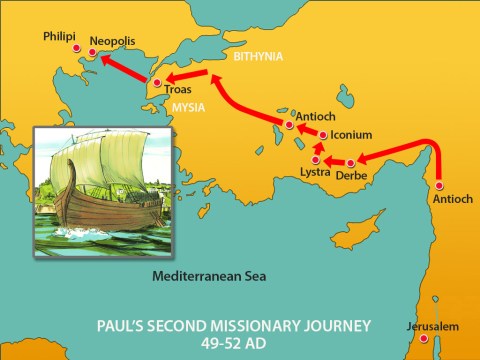
Paul has journeyed about half-way through his second missionary trek. We will complete his journey in our next sermon.
To be continued.
Blessed be the LORD God of Israel.

